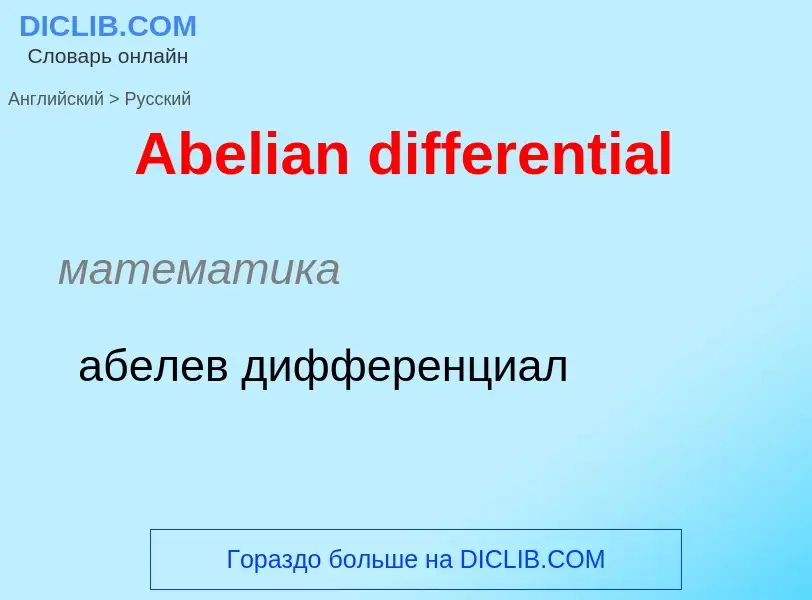Übersetzung und Analyse von Wörtern durch künstliche Intelligenz
Auf dieser Seite erhalten Sie eine detaillierte Analyse eines Wortes oder einer Phrase mithilfe der besten heute verfügbaren Technologie der künstlichen Intelligenz:
- wie das Wort verwendet wird
- Häufigkeit der Nutzung
- es wird häufiger in mündlicher oder schriftlicher Rede verwendet
- Wortübersetzungsoptionen
- Anwendungsbeispiele (mehrere Phrasen mit Übersetzung)
- Etymologie
Abelian differential - Übersetzung nach russisch
математика
абелев дифференциал
общая лексика
гиперэллиптический интеграл
математика
голоморфный дифференциал
Definition
Wikipedia
In mathematics, differential of the first kind is a traditional term used in the theories of Riemann surfaces (more generally, complex manifolds) and algebraic curves (more generally, algebraic varieties), for everywhere-regular differential 1-forms. Given a complex manifold M, a differential of the first kind ω is therefore the same thing as a 1-form that is everywhere holomorphic; on an algebraic variety V that is non-singular it would be a global section of the coherent sheaf Ω1 of Kähler differentials. In either case the definition has its origins in the theory of abelian integrals.
The dimension of the space of differentials of the first kind, by means of this identification, is the Hodge number
- h1,0.
The differentials of the first kind, when integrated along paths, give rise to integrals that generalise the elliptic integrals to all curves over the complex numbers. They include for example the hyperelliptic integrals of type
where Q is a square-free polynomial of any given degree > 4. The allowable power k has to be determined by analysis of the possible pole at the point at infinity on the corresponding hyperelliptic curve. When this is done, one finds that the condition is
- k ≤ g − 1,
or in other words, k at most 1 for degree of Q 5 or 6, at most 2 for degree 7 or 8, and so on (as g = [(1+ deg Q)/2]).
Quite generally, as this example illustrates, for a compact Riemann surface or algebraic curve, the Hodge number is the genus g. For the case of algebraic surfaces, this is the quantity known classically as the irregularity q. It is also, in general, the dimension of the Albanese variety, which takes the place of the Jacobian variety.

